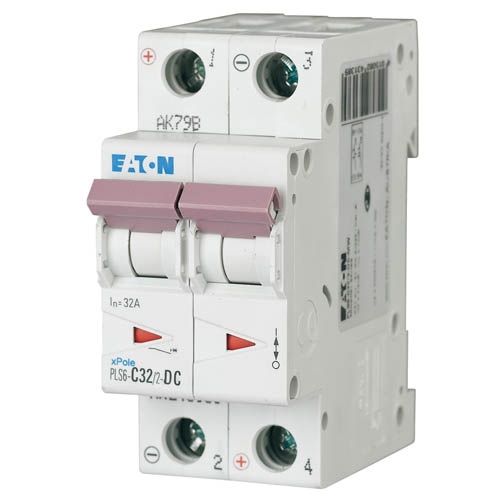MCB Breaker Basics: What You Need to Know About 32A MCB Price

Electrical safety is a fundamental concern in every home, office, and industrial setup. Among the critical devices that ensure protection from overcurrent, short circuits, and electrical hazards is the MCB breaker. These devices provide reliable protection for circuits and connected appliances, minimizing the risk of electrical accidents and ensuring an uninterrupted power supply.
Understanding the types, features, applications, and pricing of MCBs, particularly the 32A MCB price, is essential for making informed purchasing decisions. This comprehensive guide explores everything you need to know about MCB breakers and factors affecting their cost.

What Is an MCB Breaker?
An MCB breaker, or Miniature Circuit Breaker, is an automatic electrical switch designed to protect an electrical circuit from damage caused by overcurrent or short circuits. Unlike traditional fuses, which need replacement after tripping, MCBs can be reset, offering both convenience and safety.
Key features of an MCB breaker include:
- Automatic Trip Mechanism: Disconnects the circuit immediately during a fault condition.
- Reusability: Can be reset without replacing the device.
- Compact Design: Suitable for modern distribution boards and electrical panels.
- Fast Response: Trips instantly to prevent damage to wiring and appliances.
MCB breakers are a fundamental part of any modern electrical system, ensuring protection for both residential and industrial circuits.
Importance of MCB Breakers
Proper use of MCB breakers ensures several advantages:
- Safety: Prevents fire hazards by disconnecting faulty circuits.
- Protection of Devices: Safeguards appliances and equipment from overcurrent damage.
- Reliability: Ensures circuits operate consistently without interruption.
- Convenience: Resettable design eliminates the need for frequent replacements.
- Compliance: Meets electrical standards for safe operation.
Neglecting proper MCB installation or selection can compromise the entire electrical system, making it crucial to understand how to choose and maintain these devices.
Types of MCB Breakers
MCB breakers vary based on current rating, poles, and tripping characteristics. Knowing these types helps select the right MCB for your application.
- Based on Poles
- Single-Pole MCB: Protects a single live wire; ideal for lighting circuits.
- Double-Pole MCB: Protects both live and neutral wires; suitable for small appliances.
- Triple-Pole MCB: Used for three-phase industrial circuits.
- Four-Pole MCB: Protects three-phase circuits with an additional neutral protection.
- Based on Tripping Characteristics
- Type B: Trips at 3–5 times rated current; best for residential lighting and outlets.
- Type C: Trips at 5–10 times rated current; suitable for small motors and inductive loads.
- Type D: Trips at 10–20 times rated current; used for high inrush currents like heavy machinery.
- Based on Current Rating
- MCBs come in ratings like 6A, 10A, 16A, 20A, 32A, 40A, 63A, and 100A.
- The 32A MCB price is relevant for circuits with medium to high load applications such as water pumps, air conditioners, and small industrial equipment.
Factors Affecting 32A MCB Price
The 32A MCB price can vary depending on several factors:
- Brand Reputation: Established brands often charge more for quality assurance and warranty.
- Material Quality: High-grade plastics and metals increase durability and safety.
- Features: MCBs with additional protection, like surge protection or thermal overload trip, can be pricier.
- Type and Poles: Single, double, or triple-pole MCBs influence pricing.
- Market Demand and Availability: Seasonal demand or supply chain issues can affect prices.
- Compliance and Certification: Certified MCBs adhering to international standards are generally more expensive but safer.
While cost is important, choosing MCBs solely based on price may compromise safety and performance. Investing in reliable, certified MCBs ensures long-term protection and efficiency.
How to Install an MCB Breaker
Proper installation of an MCB breaker is critical for safety and performance. Follow these steps for correct installation:
- Turn Off the Main Power Supply
- Ensure the main circuit is disconnected before beginning installation to avoid accidents.
- Select the Correct MCB
- Choose the appropriate type, current rating, and number of poles based on the circuit load.
- Mount the MCB
- Secure the MCB on the DIN rail in the distribution board.
- Ensure adequate spacing between adjacent MCBs for heat dissipation.
- Connect the Incoming Supply
- Connect the live wire from the main supply to the input terminal of the MCB.
- For multi-pole MCBs, verify the correct phase sequence.
- Connect the Load
- Connect the outgoing wire to the load terminal.
- Tighten all terminal screws to prevent loose connections, which could cause arcing.
- Check Polarity and Phase Sequence
- Ensure live, neutral, and earth wires are correctly connected.
- Test the MCB
- Turn on the main supply and operate the MCB manually.
- Simulate a fault condition to ensure the MCB trips properly.
- Label the Circuit
- Clearly label each MCB to identify the circuit it protects for easier maintenance and troubleshooting.
Proper installation ensures long-term safety, prevents nuisance tripping, and protects connected appliances.

Applications of MCB Breakers
MCB breakers are versatile and used across different sectors:
- Residential: Protects lighting circuits, water pumps, air conditioners, and household appliances.
- Commercial: Safeguards office equipment, HVAC systems, and retail lighting networks.
- Industrial: Protects motors, machine tools, and heavy-duty electrical machinery.
- Agricultural: Secures irrigation pumps, water systems, and processing equipment.
A 32A MCB is commonly used in circuits with medium-load appliances like air conditioners, water pumps, and other industrial equipment, making the 32A MCB price an important consideration for budgeting.
Maintenance Tips
Maintaining MCB breakers is essential for safety and longevity:
- Inspect MCBs regularly for signs of wear or overheating.
- Tighten loose connections to prevent sparking and energy loss.
- Replace MCBs that trip frequently under normal loads.
- Clean dust and debris from the distribution board.
- Test MCB functionality periodically to ensure reliable operation.
Routine maintenance ensures protection, prevents downtime, and extends the operational life of electrical systems.
Advantages of MCB Breakers
Using MCB breakers offers several advantages:
- Enhanced Safety: Immediate protection against overcurrent and short circuits.
- Reusable: Can be reset after tripping, unlike traditional fuses.
- Compact and Neat: Fits easily into modern electrical panels.
- Reliable: Provides consistent protection without failure.
- Cost-Effective: Reduces the need for frequent replacements and repairs.
Investing in high-quality MCBs ensures that your electrical system remains safe, efficient, and reliable.
Conclusion
Understanding MCB breakers and their applications is essential for maintaining electrical safety and efficiency. Paying attention to the 32A MCB price ensures that you choose reliable, durable, and certified products suitable for your electrical needs. Proper selection, installation, and maintenance of MCBs safeguard circuits, appliances, and people from potential hazards.
For high-quality MCB breakers, including 32A variants, and expert guidance on installation and electrical solutions, Lauritz Knudsen Electrical and Automation provides a wide range of reliable products that prioritize safety, performance, and long-term efficiency for residential, commercial, and industrial applications.


